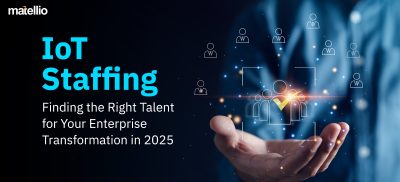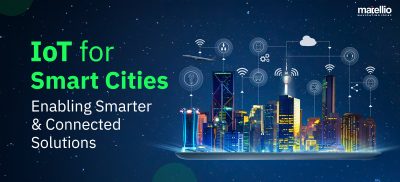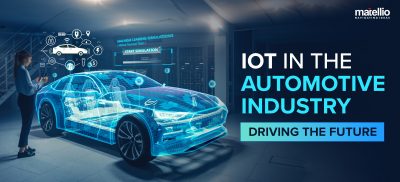
The environment is one of the major causes of concern these days. With global organizations coming forward toward the cause, innovators are doing their bit. According to Meticulous Research, the “Environmental Monitoring Market Will Reach $21.08 billion by 2025.” Not only does this category of app unleash a good way for people to stay healthy, but it also offers a promising opportunity for businesses to invest.
To help these thought leaders, we have developed this blog to help you understand why you should build an IoT-based environmental monitoring app like AirVisual.
Scroll down to read ahead.
Let’s Know AirVisual Better
AirVisual is a kind of real-time, 3D pollution map. It combines data from public governments’ air quality stations, satellite data, and community contributors to display live models of what air quality looks like across the globe.
The most prominent aspect of the application is how it displays PM2.5 readings heat mapped in vivid AQI colors. Anytime the user clicks on the map, it points to the PM2.5 concentration figure at the bottom of the screen. It can help users learn about pollution and weather patterns by using data overlay.
Which are IoT-based Environmental Monitoring System like AirVisual?
Let’s check out some IoT environmental monitoring system like Air Visual. This will also help you highlight the competitors and what you are against.
1. Air Matters
Founded in 2011, Air Matters is an app that offers a real-time air quality index. It displays data such as pollen, weather alerts, and more for more than 180 countries. Users can also connect the app with Phillips or Laser egg air purifier and monitor. The app comes free for iOS and Android users with in-app purchases.
2. The AIR
Available free for iOS and Android phones, the AIR app combines land-based measurements with satellite imagery and AI learning to offer real-time air quality reports and pollution forecasts. For upcoming travels, you can also use the app to learn about the air quality index in other cities.
3. Blue Air Friend
Available on iOS and Android, the app can work independently or combined with blue air purifiers and monitors. It pulls data from 2,700+ air quality monitoring stations in 150 countries to offer real-time air quality information.
4. BreezoMeter App
BreezoMeter app collects data from 40,000 government sensors worldwide, such as traffic patterns, weather dynamics, and satellite data. The air quality index also displays health recommendations, air pollution forecasts, pollution concentrations, and more. It is available on iOS and Android.
5. Air Quality Index Near Me
Air Quality Index Near Me is an app that uses GPS location to pull air quality data around you. Once done, it displays information such as weather conditions for its users.
Features to Consider During Development of an IoT-based Environmental Monitoring System like AirVisual
1. Real-Time Data
Air quality is a highly dynamic aspect that requires constant monitoring to collect data such as fluctuations, pollutants, etc., on an hourly basis. For customers who need data pulled out at every instance, it is very important to ensure real-time data tracking and display to ensure customer engagement. IoT sensors can help you derive this real-time data while providing the least discrepancies.
2. Hyperlocal Data
Citywide data is not relevant for the IoT-based environmental monitoring system. This is because air quality data varies with neighborhood across the city. It makes hyper localization a must-have feature for ecological monitoring systems.
3. Personalized Data
No two people are the same; hence, there is no one size fits all technology. This requires app owners to personalize the information. You can opt for offering tailored solutions according to the customer segments. For instance, you can segment the customers according to age group, demographics, medical conditions, etc. There will also be some consumers who don’t fall into any categories. You need to analyze their needs and how you can make the app more engaging with personalized experiences.
4. Pollen Data
Many air quality data providers have started concerted efforts to gather data on pollen, a natural air pollutant that triggers most seasonal allergies. Speaking to all three trends highlighted above, consumers suffering from seasonal allergies need hyperlocal pollen data delivered in real-time if they are to manage their symptoms effectively and spend more time outdoors.
5. A Global Air Quality Index
Air quality is sensitive to monitor. Generally, government authorities gather this data for the private owners to use. However, every country has specific methods of monitoring and measuring the same. They use near-identical air quality and may use different reporting methods. Therefore, you need to develop a global way of collecting and reporting this data for the users.
6. Air Quality Heat Maps
Air quality and pollen data aren’t all about the numbers; companies wishing to incorporate this data into their products can leverage their creative resources to make an app or service stand out functionally and visually. Though the end user can’t always relate directly to raw data, presented as such, state-of-the-art visualizations can effectively make the invisible visible — far beyond just plain numbers and colors. For example, interactive heat maps that use colors to display pollutant levels, show local and global data in real-time, and can be customized to offer air quality information in a personalized format, offer straightforward air quality and pollen information in a form that consumers can easily act on.
How to Handle the IoT Development Aspect of the App?
IoT development can be daunting if you are recently venturing into the same. This is where an IoT development company comes in. They not only have experience in delivering services relevant to you but also offer best-in-class software and hardware developers to aid your project. Their technology consultants will enable you to uncover gaps and prepare the roadmap to success. You can help them understand your problems and challenges, and they can come up with solutions to help you address them.
You can look for the following aspects when hiring an IoT development company:
- Experience in IoT development
- Hands-on experience in IoT software and hardware development
- Quality of IoT development services they offer
- Reviews and ratings from recent clients
- Overview and expertise of their IoT projects
- Additional USPs in IoT development
At Matellio, we take care of all these requirements with our experienced business technology consulting experts. Let’s talk about our process in detail.
1. Analyzing Your Business Readiness for IoT and Identify the KPIs
The initial stage is to understand your requirements and help uncover potential gaps you can fill with IoT development services. You also need to ensure that you have listed all the KPIs against which you will analyze the progress of IoT development in your organization.
Our business technology consultants will help you achieve this target while creating the right roadmap. For instance, you need a wide pool of information during the development of an IoT-based environmental monitoring system. You need to ensure that the data is pulled in real-time for accurate predictions.
You might want to look for the following answers.
1. What data collection and management tools are you using for IoT app development?
Real-time information is critical to the working of an app like AirVisual. You need to ensure that you are collecting the data from the right sources and that the data is securely saved. At the same time, you need to display the information on time for the users. AQI at any moment may not be the same as it was 10 minutes ago. To maintain authenticity, you need to take care of this.
2. Is your security infrastructure up for the challenge?
The higher number of devices means higher entry points for cyber security threats. This risks your data, requiring a strong security infrastructure like encryption, blockchain, frameworks, etc.
3. How to integrate IoT solutions with legacy systems?
As an IoT development company, we follow standardized processes and industry guidelines. We understand the IoT system should be extensible to the existing ERP solutions. Our IoT consultation experts can help you here. Our experience delivering IoT solutions for global organizations gives us the right technology insight and understanding. Matellio’s expertise can help you create the right IoT implementation strategy and maximize your returns from the investment.
Also Read: CRM and ERP: What is Best for Your Business?
2. IoT Development
Matellio follows an agile methodology for custom IoT development. These are the stages that we generally go through.
Step 1: Discovery of all the IoT development requirements for your bank
Step 2: SRS creation with scope freezing
Step 3: UI/ UX development
Step 4: Hardware/ software development
Step 5: QA and testing
Step 6: Bug fixes
Step 7: Deployment
Also Read- IoT Software Development: A Complete Guide
Are you Looking for IoT-based Environmental Monitoring System Development?
If you want to invest in developing an IoT-based environmental monitoring system, Matellio can help you.
At Matellio, we offer these organizations to put the best foot forward in their way of digitalization. Global brands hire IoT developers from Matellio for their excellent understanding of mobile, web, and custom ERP development that helps them fill organizational gaps with the right IoT development services. Our state-of-the-art product design and development lab is well equipped to create experiences that enable you to optimize the processes and harness long-term value from your investment in IoT development services. We pride ourselves on our IoT development capabilities, which include:
- Infrastructural competence to create cutting-edge IoT hardware and software products
- Experience in building IoT products for diverse industry verticals
- Certification in the futuristic technology stack
- Secure data management policies
- Support for management of legacy and advanced devices
- High-performing analytics and data collection
Let us know your goals with IoT implementation, and we’ll build the right IoT team for you to achieve them. Share your requirements right away.





